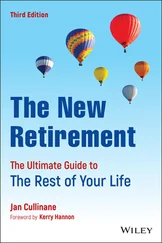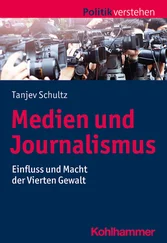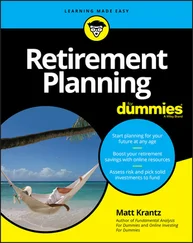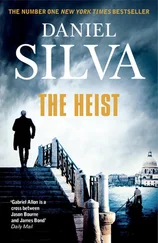This is the hidden history of the retirement crisis—a story that hasn’t made it to Fox News, the Huffington Post, or even Comedy Central. This retirement heist has produced a transfer of benefits earned by three generations of post–World War II middle-class workers to a comparatively small cohort of company executives, shareholders, and the financial industry that orchestrated the plunder.
If employers continue to control the retirement system and manage it for their own benefit, then within our lifetimes, “retirement” will inevitably revert to what it was in the 1930s and before. Society—and taxpayers—will be paying for services to support the millions of elderly, formerly middle-class Americans.
IN THE LATE 1990s,I went to Washington to talk to pension experts about why companies were adopting new kinds of pension plans.
My first stop was a leading law firm where the hallways were paved with lush Oriental carpets. There, two $600-an-hour lawyers explained that companies were changing their pensions to make them better for a more mobile workforce and to improve retirement security. They’re still saying this.
My next stop was the Pension Rights Center, with its battered furniture and shabby wall-to-wall. I brought a tray of lattes as a joke, because Fidelity Investments was sponsoring a campaign saying that skipping the daily Starbucks beverage would put someone on the road to retirement riches.
Karen Ferguson, the director of the center since its inception in the 1970s, had rounded up her minuscule staff and a few retiree advocates. They all got the joke but wouldn’t touch the lattes because there weren’t enough to go around. Someone finally rounded up some mugs and the lattes were divvied up. It was a small thing, but it distilled the spirit of the place, which under the guidance of Ferguson has done so much to improve the retirement security of Americans.
Ferguson has always generously shared her knowledge of the legislative horse trading, history, policy, tax rules, and players with every reporter who knocks on her door. Though eternally outgunned by employer groups, insurers, and the investment industry, Ferguson retains unshakable diplomacy and grace and is always a fountain of sources and legislative updates.
Norm Stein, a law professor at Drexel University, provided valuable input over the years. David Certner, an AARP policy expert, has been a valued source on legislation affecting retiree benefits. The attorneys Susan Martin, Bill Payne, and Roger McClow, who have helped thousands of retirees regain the pensions and health benefits they had earned, were amazingly generous with their time.
Many employees and retirees, some now deceased, shared their stories. Ed Beltram, with the National Retiree Legislative Network, spent many hours prospecting for retirees to interview.
I have benefitted greatly from the expertise and guidance of Joelle Delbourgo, my agent, and from the patience and professionalism of Brooke Carey and the staff at Portfolio. Nancy Cardwell provided valuable structural advice, collegues Sara Silver and Vanessa O’Connell read sections of the manuscript and were mensches, and my pet sitter, Diane Woodle, made it possible for me to spend nights and weekends at the office without worrying about the mental health and well-being of my geriatric Jack Russell, Cody.
Many of the stories in this book first appeared in some form in The Wall Street Journal, to which I owe the greatest debt. Every editor I worked with embraced the paper’s high standards for both accuracy and fairness, including its “no surprises” policy, which requires reporters to fully apprise companies and individuals of the content about them in stories before they run.
Dan Hertzberg, the deputy managing editor of The Wall Street Journal for many years, was an early supporter of these stories, which “looked out for the little guy.”
Dan Kelly, The Wall Street Journal ’s only part-time Iowa farmer and full-time editor, scrutinized most of my page-one stories, which benefitted immeasurably from his intellectual nimbleness, ability to locate flaws in reasoning, and skills as a devil’s advocate. (“You say here, ‘They ate kittens for dinner.’ What’s wrong with that? Is there a law against it? Did you get their side?”) If the facts and analyses got past Dan, the paper knew it had little to fear.
This book owes a huge debt to Theo Francis, who teamed with me on many of these stories, including our investigation of “dead peasant” insurance and executive compensation. Theo did groundbreaking work in mapping out and measuring the size of CEOs’ deferred compensation, thanks to his unmatched ability to drill into proxy filings to extract well-hidden tidbits. A journalist of catholic interests, he actually found postretirement benefits accounting interesting.
My colleague Tom McGinty joint-ventured on several projects, which could not have been done without his data-mining mastery. I feel dumb just being around him. Thanks also to Elyse Tanouye, my one-time bureau chief, who provided unstinting support and pretends to be interested when I talk about my dog.
Dedicated to the memory of Jersey Gilbert, husband and friend. Je had gelijk in het einde.
UNLESS OTHERWISE INDICATED,all financial figures are derived from Securities and Exchange Commission and Internal Revenue Service filings. The pension figures come primarily from the pension footnotes in annual reports (Form 10-K), which include annual data on assets, liabilities, costs, assumptions, and other pertinent figures.
Form 5500, which companies file with the IRS, was the source of some of the liability figures and participant information for qualified (i.e., employee) pension plans.
Executive pensions and deferred-compensation figures and facts come from annual proxy statements (Schedule 14A). Liability figures for deferred compensation at individual companies are extrapolated from deferred tax assets in the 10-Ks and (for banks) from reports filed with the Federal Financial Institutions Examination Council (FFIEC). Liability figures for executive pension liabilities at individual companies come from, or are extrapolated from, pension data in the 10-Ks. Estimates of total executive pay obligations at U.S. companies are derived from Social Security payroll data and were confirmed.
Data for 401(k) plans at individual companies come from Form 11-Ks.
To simplify matters, I have omitted specific citations of pages and dates, but figures for a specific year come from filings made the following calendar year. For example, a figure about GE’s pension obligation in 2009 will be found in the 10-K filed in 2010, just as details about the size of pensions for GE’s top officers in 2010 come from the proxy filed in 2011.
I used Morningstar Document Research (formerly 10-K Wizard) for the securities filings; the IRS 5500s were obtained from the Department of Labor. A free, though somewhat limited, database of 5500s, for both pensions and 401(k) plans, is available at freeerisa.com.
As noted below, other generally nonpublic figures and facts come from court documents.
Unless indicated, comments from individuals are from interviews with the author.
10 “Rigid and irrational legal restrictions”:ERISA Advisory Council, “Report of the Working Group Studying Exploring the Possibility of Using Surplus Pension Assets to Secure Retiree Health Benefits,” November 10, 1999, http://www.dol.gov/ebsa/publications/gulotta.htm.
11 “We believe making excess pension assets”:Ibid.
Читать дальше












